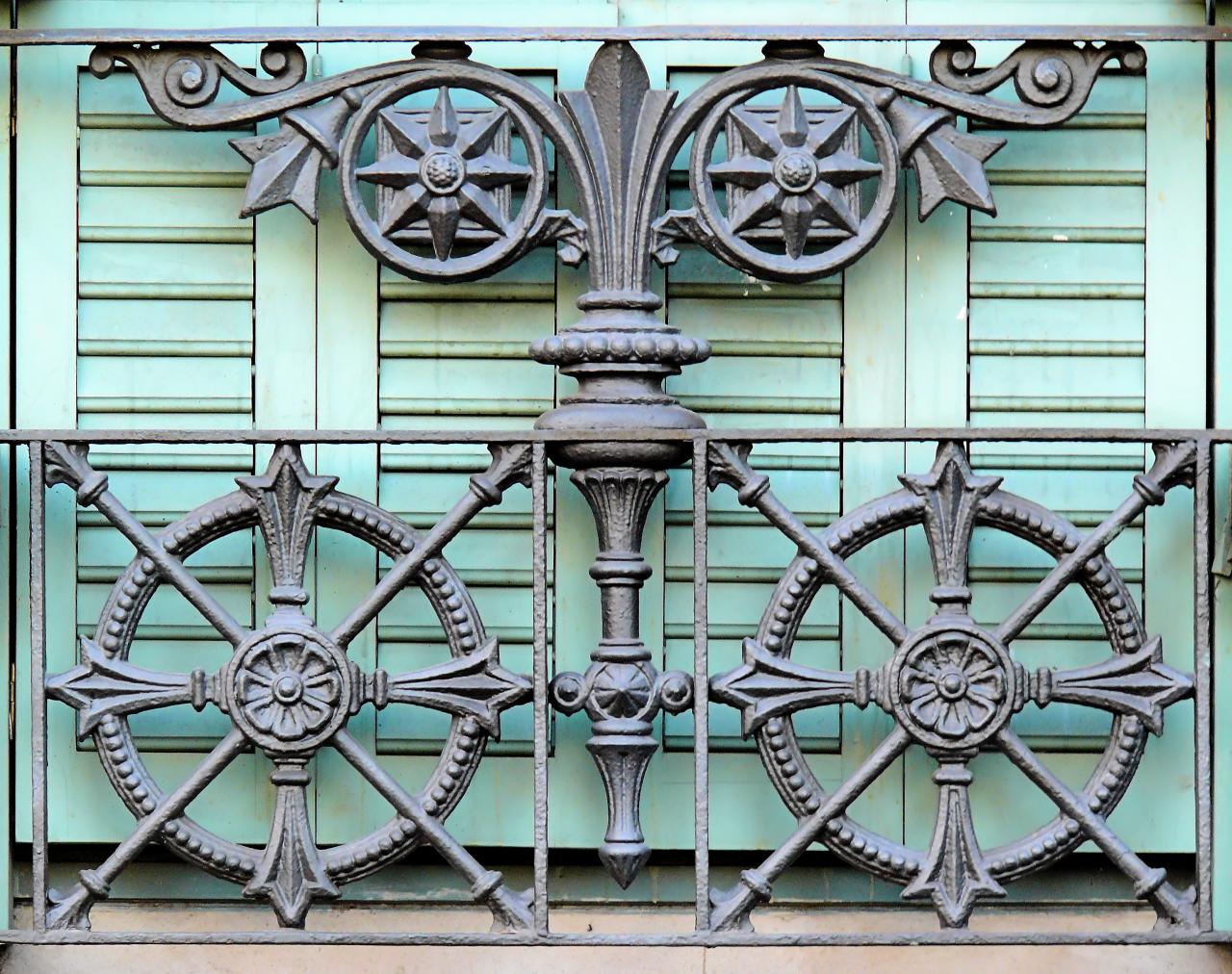#1714. Exquisite Wrought Iron Facade Railing with Decorative Rosettes in Historical Style
The image captures an exquisite example of decorative metalwork that forms part of a historic building facade. This masterfully crafted wrought iron railing displays sophisticated artistic motifs characteristic of late 19th to early 20th century architecture, possibly in Art Nouveau or Eclectic style.
Particularly striking is the compositional arrangement: the rhythmic alternation of large decorative wheel rosettes with central floral elements, connected by elegant forged crosspieces and crowned with ornamental finials. The upper section of the railing is adorned with more compact star-wheels with volute scrolls, creating an expressive silhouette and visual lightness to the structure.
Of special value is the contrast between textures and colors: the gray, slightly patinated metal surface stands out effectively against the mint-green wooden louvered shutters, creating a refined color harmony. This combination emphasizes the architectural significance of the railing not merely as a functional element but as an important component of the artistic facade design, forming its individual character.
Such decorative elements can be creatively reinterpreted in modern private construction. Incorporating wrought iron details with historically inspired motifs can give a home's facade character and expressiveness, connecting it with rich architectural traditions. This approach allows for either exact reproduction of historical patterns for classical houses or stylized simplification of ornaments for contemporary buildings.
